Where do you stay on the Via Francigena?
It’s something we’ve been asked a lot. But, by using a bit of initiative, we managed to stay pretty much anywhere, from campgrounds to monasteries, on our four month walk to Rome.
There was no hard and fast way to find accommodation. Some we had been given by the Confraternity of Pilgrims to Rome when we joined, others like campsites we found on maps, friendly pilgrims would recommend places on the hoof, while our Italian guidebook had a helpful ‘Via Francigena accommodation’ bit for every section.
And there was always the chance meet with the odd person who would put us up for free in their house. Can’t beat Lady Serendipity!
The exciting upshot of this uncertainty is we have been able to stay in some unreal -UNREAL- places. Finding them has been one of our favourite parts of travelling on foot.
So to give you a bit more of an idea about Via Francigena accommodation, we’ve picked out 5 examples of the places we stayed in, and some really cool ones at that. A lot of these options are pretty cheap, designed to help pilgrims on their way to Rome. NB: for these type of places, we found it pays to ring ahead generally.
We think this gives you a whole other angle on doing a walk like this – it’s a journey of discovery all on its own:
1. The Monastery
Location: Reims, France
First up is our stay in the gatehouse of the Benedictine Nuns Abbey in Saint-Thierry, just outside Reims. It involved ringing a giant doorbell to be let in the coaching gates, dinner with other convent guests, watching the nuns sing the Compline service at sunset, and finding a secret door out the back to the vineyards of champagne giant Veuve Cliquot.
Yeah, it was cool.
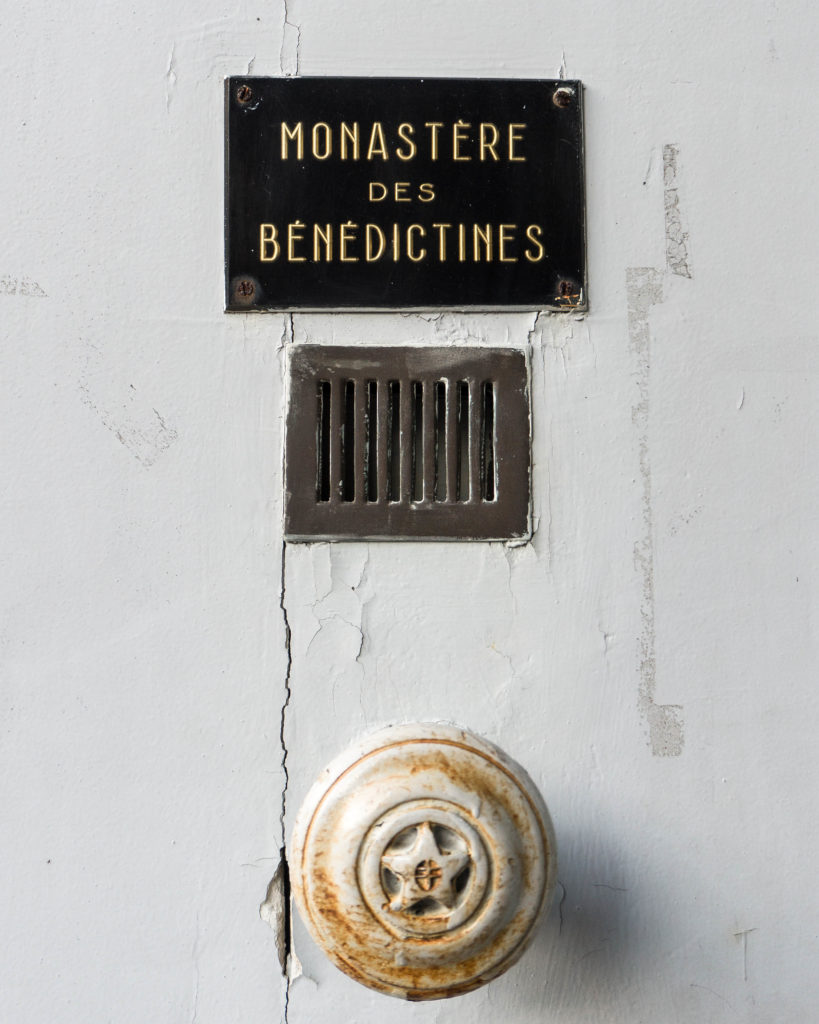
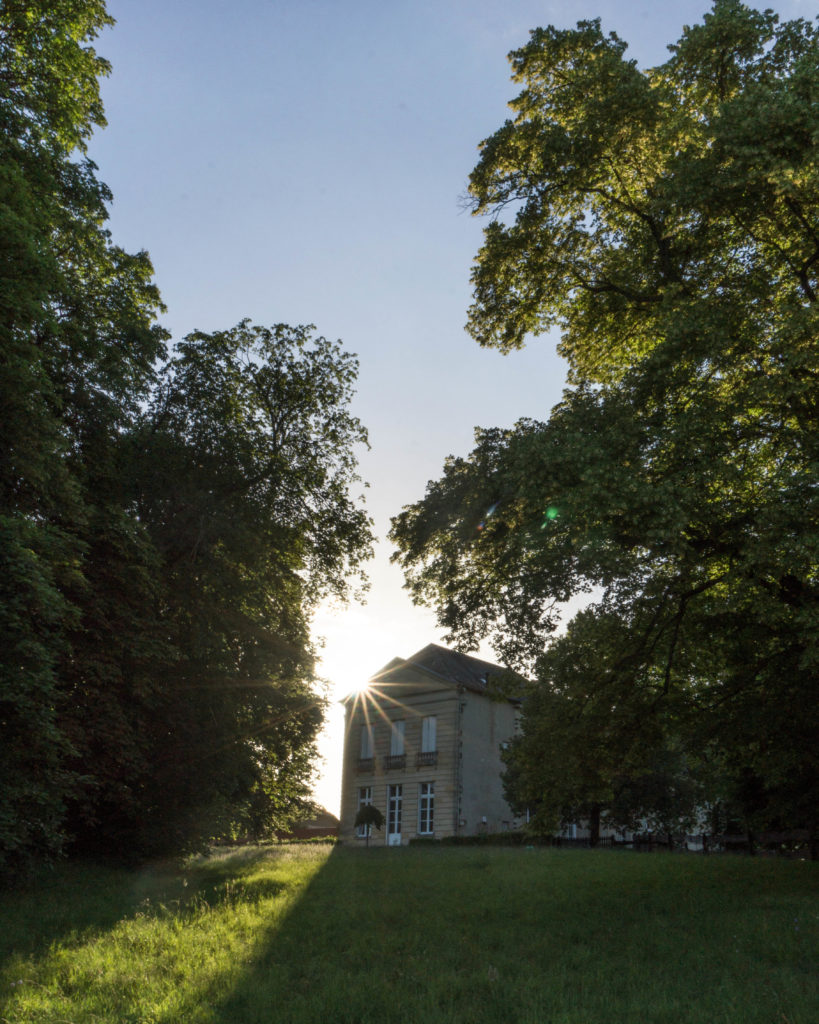
2. The Campsite
Location: Lac Leman (Lake Geneva), Switzerland
We camped a lot –a lot– in the first half of our walk, at sites which we generally just turned up at, even in midsummer. As we moved around Lac Leman we found some particularly fantastic camping spots, all dotted along the shoreline. But this one – near St-Saphorin – beat them all, with a pitch right by the water and the Alps beckoning us on.
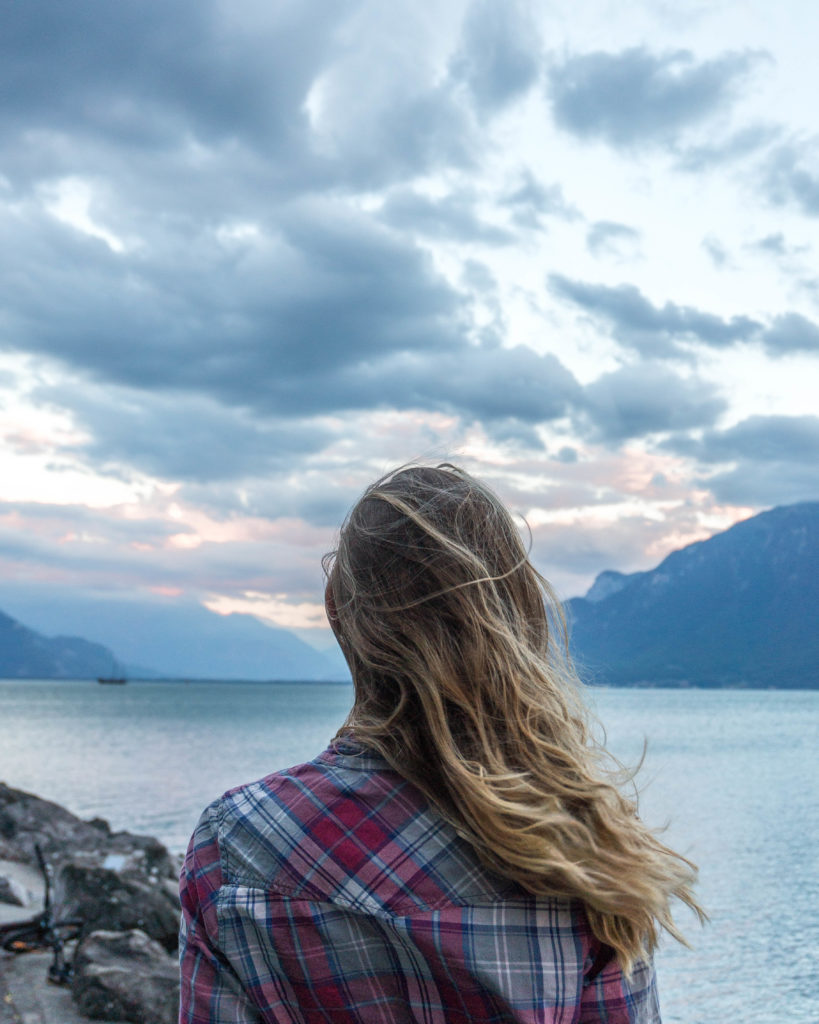
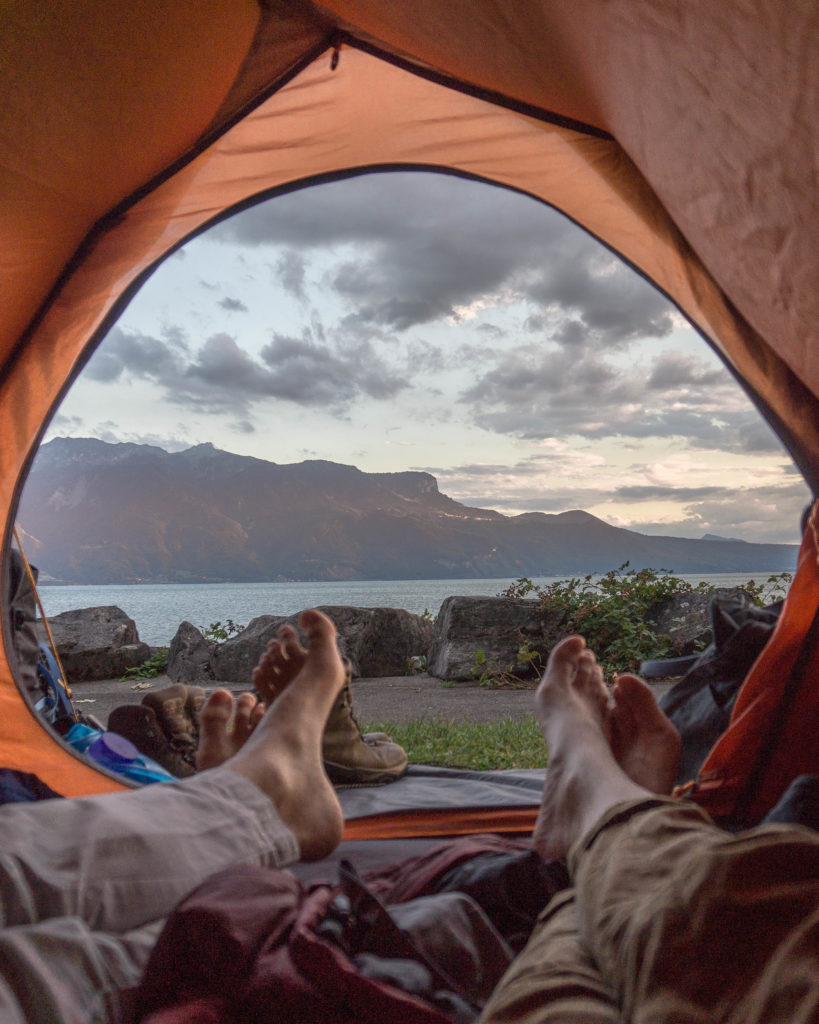
3. The Hospice
Location: Great St Bernard Pass, Alps, Switzerland
Once we had scaled the Alps, a stay at the Great St Bernard Hospice seemed the perfect idea. It sits right at the top of the Pass (just metres from the Italian border) and has helped travellers make their way over the mountains for 1000 years.
It’s not just Via Francigena accommodation, the Hospice was jam-packed full of walkers from all over the Alps. It was the most surreally beautiful stay on the whole walk.
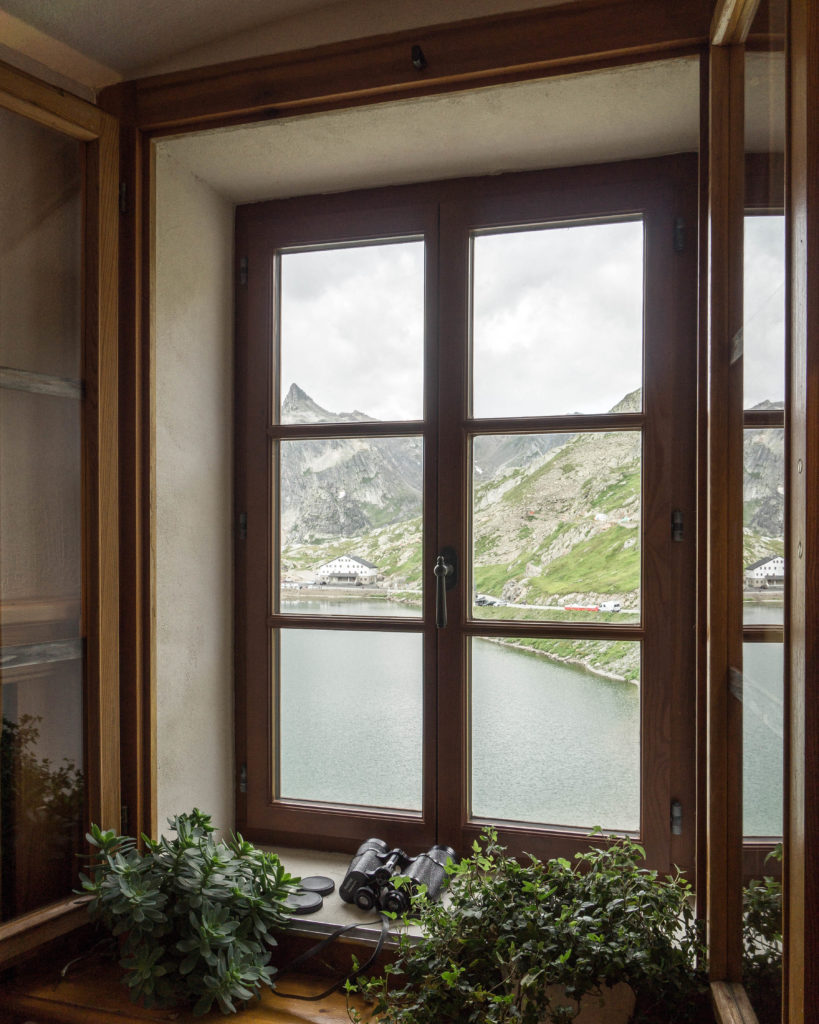
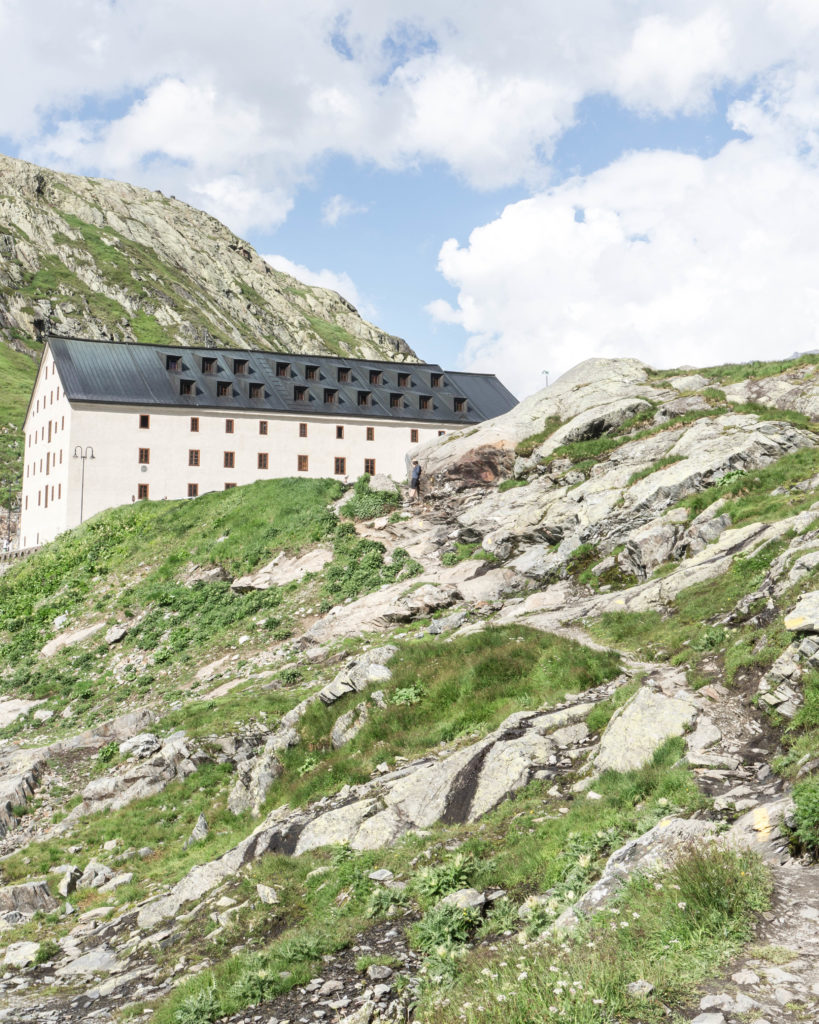
4. The Tower
Location: Palestra, Piedmont, Italy
Bang slap in the middle of the hot, steamy rice fields of the Vercelli region, we found this stay: a 1000 year old tower. Run as a guesthouse, the wonderful host does give special rates to pilgrims. We were bowled over by actually getting to stay in it! This tower is the last remaining of four, by the way, all of which once fenced the tiny town.
And just LOOK at the interior too!
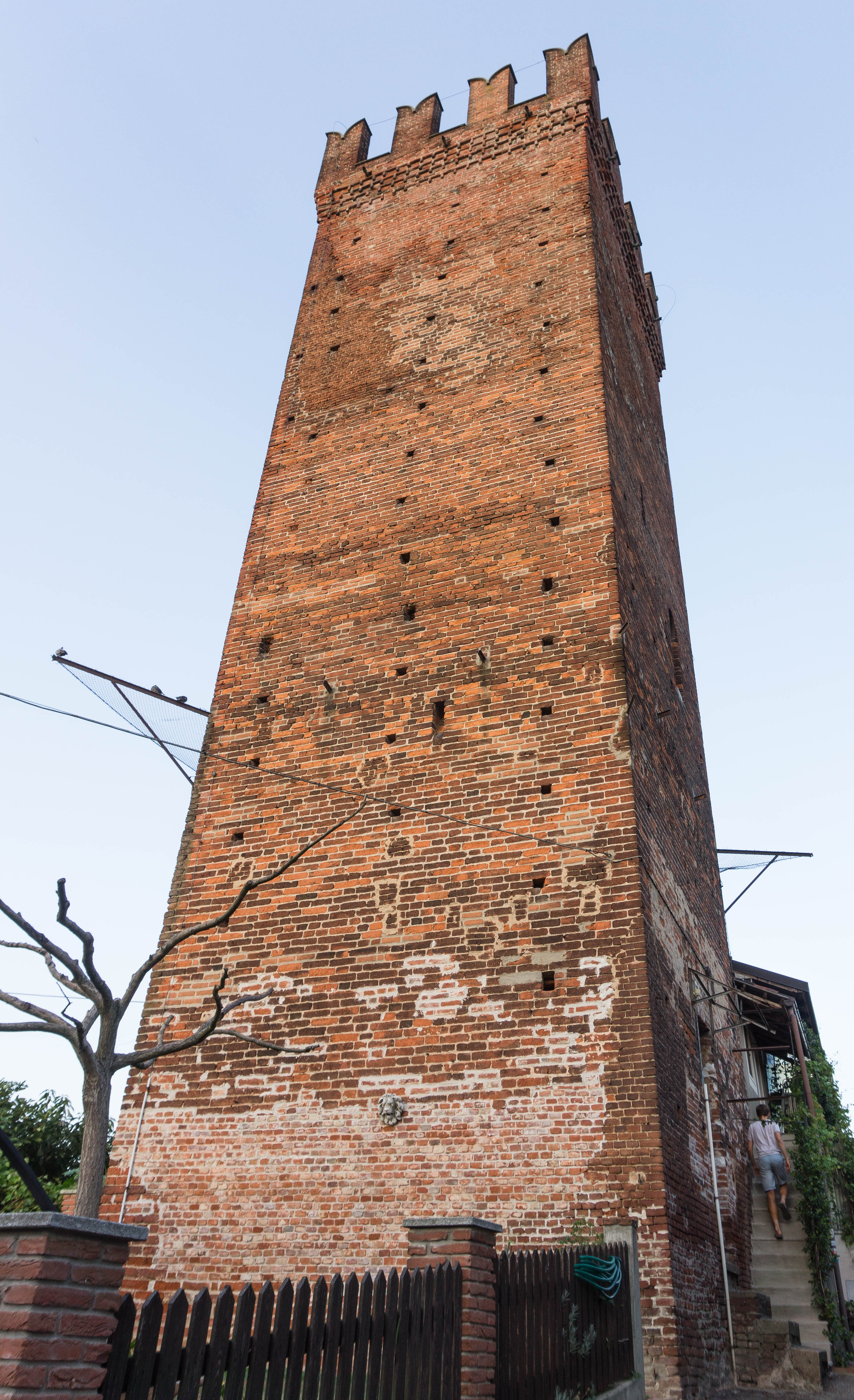
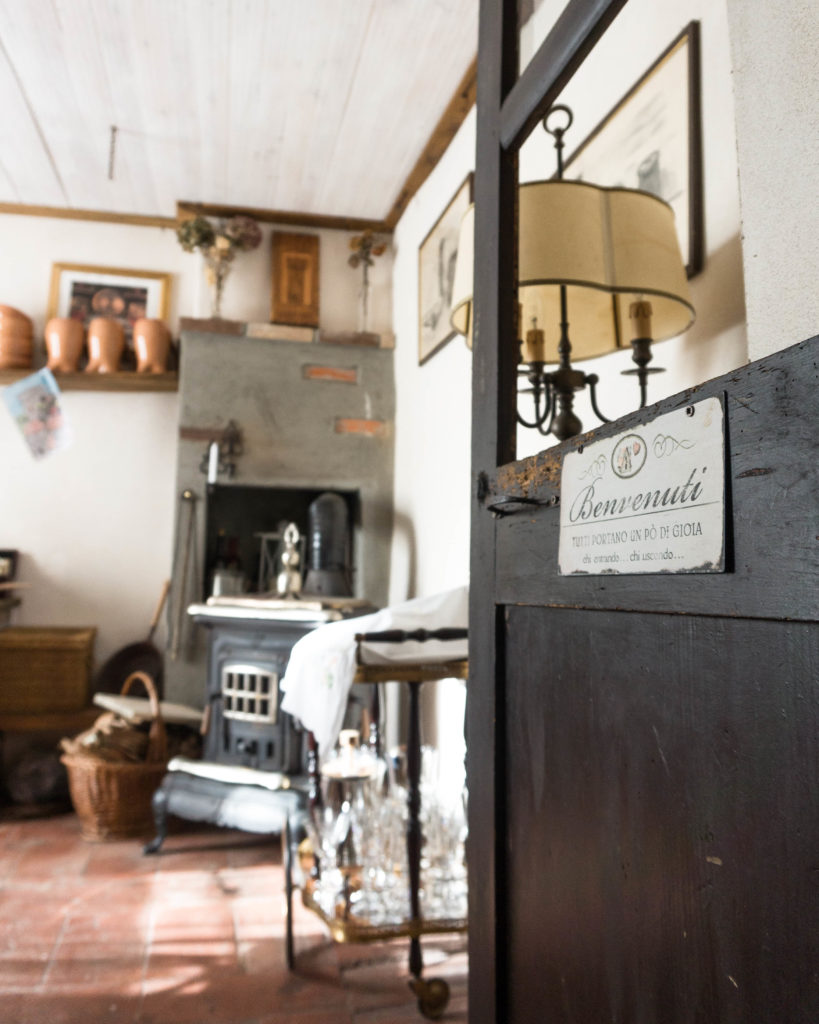
5. The Pilgrim House
Location: Radicofani, Tuscany, Italy
We found this ostello in the high village of Radicofani, 800m up in the Tuscan hills. Ostelli like this are like pilgrim hostels, set up for people walking the Via Francigena, and are generally donation-only. Which doesn’t really mean free, but more give-what-you-can (you need a pilgrim passport too).
The Radicofani one was our final one, sat right in the square, and felt like the most deeply authentic Tuscan home.
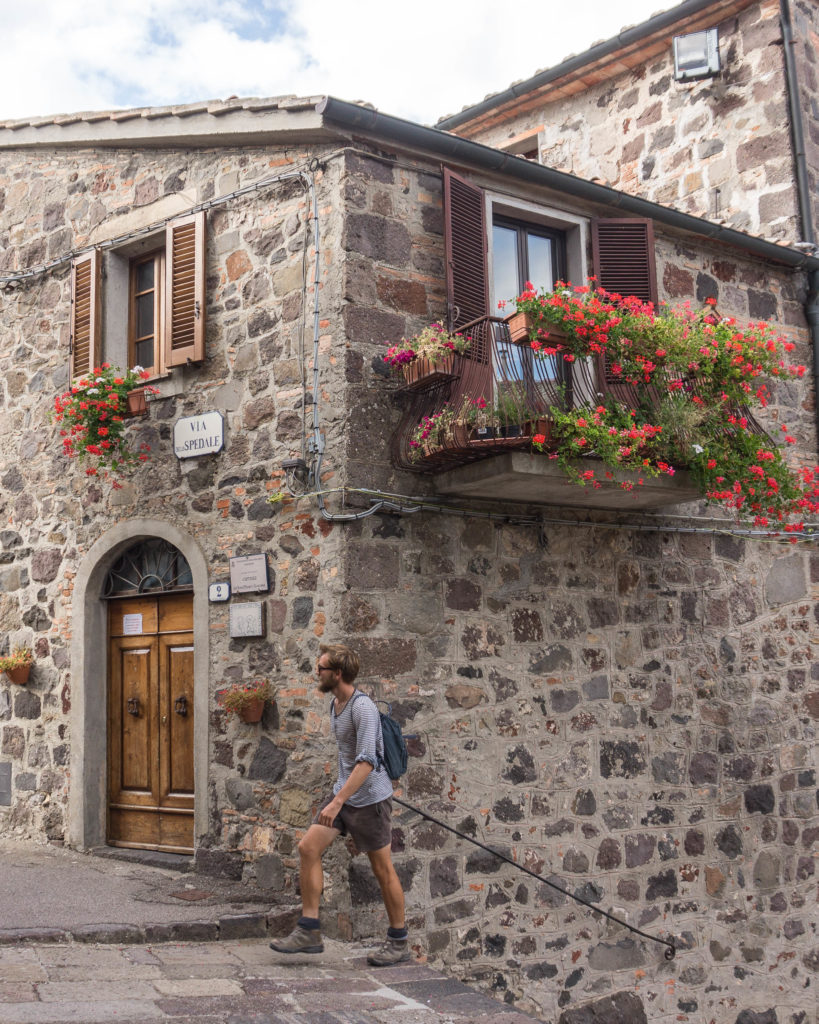
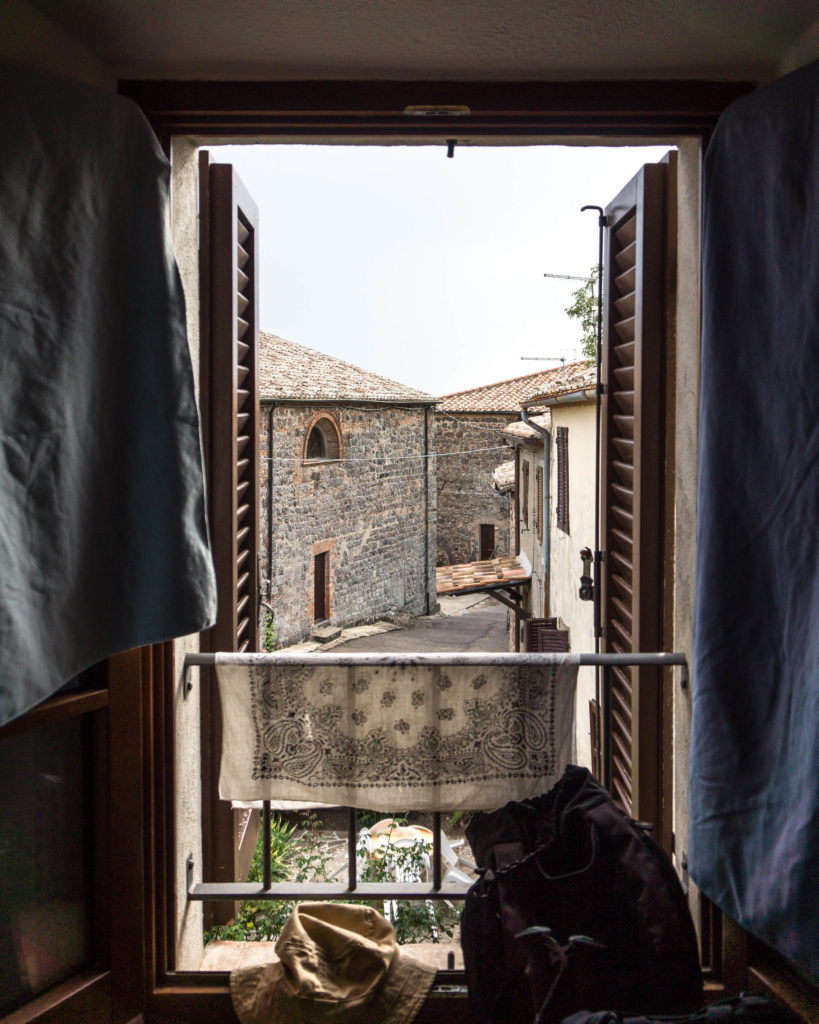
We’ve included just 5 of the well-over-one-hundred places we managed to stay whilst walking the Via Francigena. Yep, we have 100 memories of places like this! Who wants to come with us next time we set out?

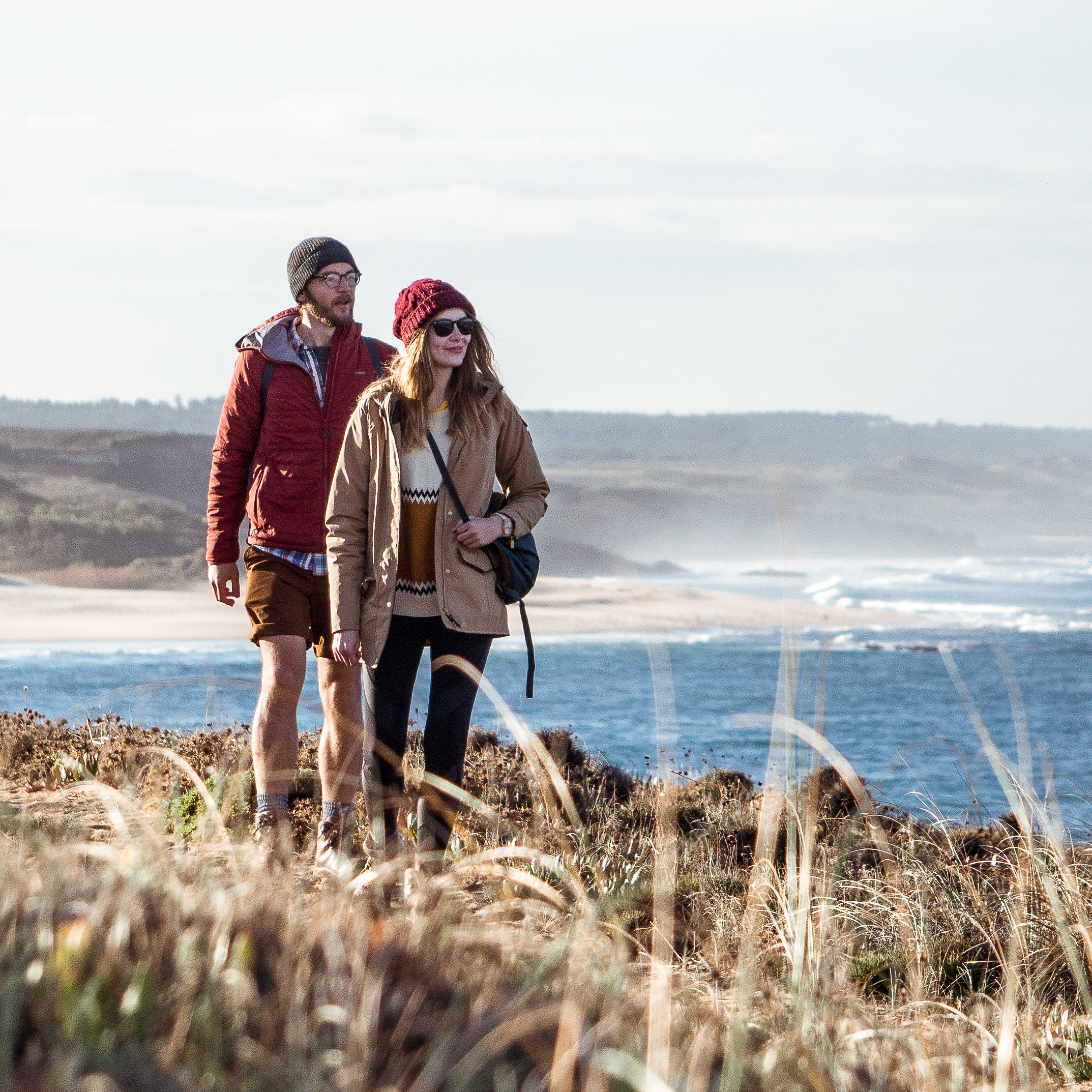
Thanks for your blog, great write-ups and awesome pictures. It brings up great memories.
I slept in the Radicofani hostel and it was a perfect and authentic experience. The volunteers from the Confraternity of St-James who greet you and open their doors for you and also cook for you are the best part ! Every time i’ve met volunteers of this organisation it was a wonderful night.
Hi Alexandre, it really was a great stay on the Via Francigena. We also look back at it with very fond memories, particularly of the generosity of the volunteers. Thanks for commenting!
Great Blog. I have twice done the VF from St Bernardo Pass to Rome and have done the Francigena Ultramarathon. This year I aim to start in Canterbury and go to Rome. Did you stealth camp in France or campgrounds? I leave from Canterbury on August 22 or 23 if you have any tips please share for France! (I speak no French). I’m going to keep a quick pace (50k daily) but are there any cities or villages in France I shouldn’t miss!? I’m glad you liked Radicofani (so pretty.) my favorites in Italy are Radicofani, Siena, Montiriggione, Bolsena. Thanks for your blog!!!
Thanks so much for these recommendations. I start from Great Saint Bernard Pass on 29 August next year and am soooooo excited already! Mel
Hi Mel, thanks for getting touch. Hope the recommendations are useful. The Terre di Mezzo guidebook we found to be very useful and up to date for pilgrim accommodation in Italy. Good luck in your preparations. If you have any other questions, just drop us a line. Luke & Nell
HI! Just starting my research on this route. I am hoping to do this with my husband and two young sons, 8& 9, spring of 2018. My boys and I completed the Camino de Santiago last spring having started in SJPP they are pretty ambitious hikers. We of course stayed in alberques, hostels and an occasional hotel but are wondering on this route if camping is necessary? What sort of tent did you pack and why?
Hi Sandra, great idea and good luck! Are you walking the entire path in the spring?
Because it is a long route camping was necessary for us to keep costs lower. It helped a lot! By camping about 60% of the time in France – campsites are very easy to find along the VF in France – we kept below our budget of 50 euros per day, which helped us in the more expensive Switzerland and slightly more expensive (because of very few campsites) in Italy. We took a two-person Vango tent, which we will continue using next year in future adventures.
If cost isn’t much of an issue. You don’t need to take a tent. Because there is plenty of accommodation all the way along the route. But, the accommodation isn’t cheap, especially in Switzerland. Unlike the Camino, the Via Francigena isn’t “set-up” for pilgrims in France and Switzerland. You will find pilgrim accommodation in these countries, but only sporadically. In Italy there are Ostelli (pilgrim hostels) within walking distance of each other, which is more like the Camino.
Don’t let this put you off. It is a wonderfully adventurous walk. We highly recommend doing it (understatement!).
Any other questions, let us know.
Luke & Nell
Hi Luke & Nell,
I am interested in walking the VF from Sarzana to Rome, and am curious about how Ostelli work. Do I need to contact hosts in advance, or simply find the pilgrim hostel in the town when I arrive? I am quite concerned about the accommodation, as I do not feel experienced enough to solo camp for weeks on end, so an answer to this would be greatly appreciated. Many thanks,
Rob
Hi Rob,
Sarzana to Rome is a great stretch of the VF, you’ll enjoy it. Plus it has the added bonus of Ostelli dotted along the route in most places. It’s best practice to contact an Ostello the day before. If you get into a situation where you need a night but haven’t booked, almost always you’ll get into an Ostello without booking (with exception possibly in some places in August). Honestly, there’s no need to be concerned, there are pilgrim places for every night along the way between Sarzana and Rome.
We’re working on document that lists all our stays along the Via Francigena, so stay tuned for that, because it may be helpful. Subscribe to get it hot of the press!
Buon Camino,
Luke & Nell
Hi Luke & Nell,
I really appreciate the response, it is good to hear how common the ostelli are. Sounds great, I am looking forward to reading that post!
Rob
Hey guys,
Was couchsurfing or Airbnb something you guys looked into during the VF? I wonder how they compare to the pilgrimage accommodations and hostels along the route. Also, I would love to know more about the various places of accommodation you stayed in during your camino! These postings are full of great information!
Thank you both again!
We used Airbnb in pretty much every city we stopped in, useful for having a day or two off. They are cheaper than hotels, and enable to you to cook for yourselves, which is great. The pilgrim accommodation is donativo, so really you spend what you want to.
Cheers, and good luck!
L&N
OMGosh, if you could provide suggested accommodations for the following cities along the Via Francigena I would be immensely grateful. Siena, Lucignano, Buonconvento, San Quirico d’Orcia, Castiglione, Radiconfoni, Acquapendente, Bolsena, Montefiascone.
I had hoped to find a convent, monastery, or similar facility in those locations but am still at the zilch point of research. I have found such facilities reliable, but at this point am willing to research any other type suggestion. I am a senior who will be traveling with my daughter. Mille grazie for any information you are able to provide.
Hi Lola, thanks for getting in touch. Apart from Castiglione (which is an amazing little place with some of the best walking of the whole Via Francigena just after it!) pilgrim accommodation is available in every othet place you mention. We used the Terre di Mezzo guide which has fantastic accommodation listings (with up to date emails and numbers) and maps. So just get that and you’ll be sorted! Here’s the link: https://www.amazon.co.uk/Francigena-1000-kilometres-foot-Bernardo/dp/8861890849
Great!!! I.m following the conversations because we are plannig to go Rome from San Gimignano this ocotber with my brothers. I´ll see this book. Tks!!
No worries – happy planning and have a great walk!
Hi Luke and Nell!
Just came across your blog and found it really helpful. I’m planning on walking the Francigena starting in April this year. I am planning on doing it v much on a shoe string so am planning on camping as much as possible. When you camped were you always on sites or did you find spots you could stay for free?
Thanks,
David
Hi David,
Have a good walk, April is just around the corner now!
We used campsites every time we camped because there are so many in France and Switzerland. However, we knew others who free-camped easily. Free-camping will be easiest in France, in Swizterland you’ll probably be fine, but in Italy, you’ll struggle. If someone spots you they are likely to have a go at you!
Good luck,
Luke & Nell
hi! i read you have camped along the france path, it’s easy to find camping each day? I mean to walk the in France and i really mean to do it camping by camping and not hostel to hostel… it’s possible by your experience? there is a guide or a camping list? many thanks!!
Hi Ilaria,
We camped about 60-70% of the time we spent 7 weeks in France. It is possible to camp most nights. There are campsites in most towns. We are in the process of putting together our accommodation list (in full), so look out for that on the blog. Subscribe to us to be notified as soon as it is published!
Thanks for getting in touch,
Luke & Nell
Hey – curious if a Pilgrimage Credential was necessary to stay in some of the hostels / monasteries along the way, I see it for sale for like 5 euros or something but just wondering if anyone even asked for it or what not.
thanks
tom
Hi Tom,
Worth getting, because we got asked for it a lot. And particularly in Italy, you can only stay in some places with a credential. Surely you want to collect all the amazing stamps along the way as well? 🙂
Luke & Nell
Hello,
Thank you so much for your blog, the places you stayed look lovely! We are setting off next week on the bikes with our six-month-old baby. Do the pilgrim hostels you stayed offer washing facilities? And did the places you visited feel more or less safe?
Many thanks,
Naya
Hi Naya,
What a journey with a six-month old! How long are you going to take to do the trip to Rome?
All pilgrim hostels we stayed had washing facilities. Just to warn you though, we’re not sure how hosts of some of the pilgrim stays would be having a six-month old. They may not like the idea in a dormitory set-up! Not all of the pilgrim stays have private rooms. A lot do, but not all. Just so you are aware.
Pretty much all felt safe. And if they didn’t we would more than likely just go and find somewhere else to stay.
Happy planning!
Luke and Nell
Hi, In June 2018 we walked from Lucca to Siena and hope to walk from Siena next year. We found the route completely different from Camino Frances in Spain. The week we walked was last week of June and over the week we only met 5 or 6 other pilgrims. What was your experience of meeting people? Does it get busier nearing Rome? If you have any suggestions for accommodation from Siena onwards that would be very helpful.
Hi Aine, thanks for the comment! It is very different to the Camino Frances, and you actually walked the busiest section between Lucca and Siena 🙂 We walked between Lucca and Siena at the end of August, so it being peak Italian holiday season we met a lot of other pilgrims on the trail. However, never had a problem getting a bed in a hostel (again very different to the Camino Frances!).
It doesn’t get busier the closer to Rome you get. The Lazio section isn’t popular. There have been a few articles written about the last section, including one by the New York Times (Viterbo to The Vatican), and that was before we walked the section, but we saw only a few pilgrims, and they were people we had walked a bit with earlier in Italy.
You will find ostelli strategically placed along the VF from Siena to Rome. There’s a long section in the Val d’Orcia that worries a lot of people (35km San Quirico d’Orcia to Radicofani), but we split it by walking a short day of only 8km to Castiglione d’Orcia to leave the spectacular stage to Radicofani not too long at 27km. Superb part of the entire route.
We have been meaning to put together a PDF of every place we chose to stay at along the Via Francigena for people to use as part of their research. Keep coming back to the site over the next couple of months to find it, or subscribe and we will e-mail when we publish it.
Hi Luke and Nell
Fantastic work on the website. Iam in my 60s and planning to walk in 2019 leaving Uk in April. How can i get good details of each section. I read people walking 35km days and getting lost etc,
Also wondering about details on accommodation. France in particular I see is a concern.
Hi Barbara, and thank you very much! Great to hear you are going to take on the Via Francigena in 2019. We are going to be posting a PDF soon with every place we stayed at along the way for people to use as part of their planning and research. You’re right France is more of an issue than Switzerland and Italy, but there’s accommodation in every village and town, just sometimes it isn’t suitable for lower budgets, which is why we did a lot of camping.
A lot of people give Alison Raju’s Cicerone guidebook to the Via Francigena a bad name, however we carried the two volumes the whole way and found them useful for accommodation and information about the places you pass through. The Lightfoot Guide is very helpful -if at first a little difficult to get used to- and accurate (it’s updated regularly by walkers). The Lightfoot is better for the actual direction of the route in France compared to Alison’s book, but that will all change soon as she is bringing out a new edition with amendments. Summary: best to have both!
Dear Nell and Luke,
I met some pilgrims during a recent trip in Italy and now Home thinking about doing Via Francigena next spring.
What a treasure to find your bolg, what a good way to see the world by slow travel!
Love your stories and photos!
Please keep on post more!
Thank you!
Jennifer
Hi Jennifer, glad you found us! Thank you very much for your nice words.
Are you planning on walking from Canterbury to Rome next spring?
Happy planning, and if you have any questions drop us a line at luke@whatifwewalked.com
L&N
Hi, First off you guys are amazing! the photos all around your site are gorgeous.
I plan to do a part of the trail as well and was wondering if you think doing the Tuscany part around the end of April would be okay weather-wise.
What do you think?
Thank you very much! Great news you’ll be heading out and walking the length of Tuscany, it’s a fantastic part of the walk. The end of April into early May can be amazing, lovely and green. However, there is a heightened risk of rain. And heavy rain too. However, because it will be so pretty, particularly south of Siena in the Val d’Orcia at this time of year, and with very few tourists around, it’s well worth the risk. Go for it! P.S. And walk early in the day because the rain is most likely to come mid-afternoon!
Hi Luke,
Great site!! Thank you both for all your work. I completed the Camino de Santiago ’18 and will begin the Via Francigena June ’19. My question is: If I finish early enough (1st or 2nd week of Sept.) I would like to also complete the Way of St. Francis going north from Rome. Any advice on the mountains during that time of year? Thank you, again for all your hard work.
Eric
Hi Eric, good to hear from you! And thank you!
Well done on completing the Camino. I’m sure you’ll find the Via Francigena a good step on from it!
September is a wonderful month in Italy, and we’ve lived in both Tuscany and Umbria (just outside of Assisi) so we know it’s good for walking at that time of year. We know the way well between Spoleto and Assisi, and the mountains you encounter there. Even though difficult to say, it’s likely to be short, sharp downpours at that time of year. You’ll have many more warm, sunny days through September and October – and the visibility will be excellent! Are you going to go all the way to Florence from Rome, or to Assisi?
Thanks again for the message,
L&N
Hi just read your very interesting article. Planning on doing a small part of the Via Gambassi Terme to Siena in June. Where can I get the best information on that section? I would also like to know where I can get the passport to get stamped on the way or can I simply use my Spanish one from Santiago? Many thanks Carmel
Hi Carmel, good to hear from you. Gambassi Terme to Siena is a great section! It’s a long section, but the day before Gambassi Terme (from San Miniato to Gambassi Terme) is pretty spectacular – and in June it would be probably at it’s best because of the wheat fields and wild flowers (tempting?)! So if you could fit in that extra day, we would recommend it.
We’re working hard on an accommodation list at the moment for the entire route, based on our experience. So keep an eye out for that. Subscribe if you want it direct to your inbox. We also highly recommend the Terre di Mezzo guidebook for information of the Italian section. Available in English as well as Italian. The maps are excellent, and so too are the accommodation details!
Re pilgrim passport. You will be able to pick one up in Gambassi Terme or San Miniato Alto if you decide to do the day before. Just go to the respective pilgrim accommodations and they will have one at the front desk.
Any other questions you know where we are 🙂 🙂
Luke & Nell
Hi guys!
Just wondering roughly how much you would plan to spend on accommodation and food per day for the Siena->Rome section? We’re keen to stay in the Pilgrim Hostels. Alternatively, would you suggest camping for this section?
Really appreciate the help!
We spent under 50 euro per day. You’ll find a pilgrim hostel at every stop along the Siena and Rome section. The Terre di Mezzo guidebook is very helpful for accommodation listings. We’ll be publishing our own accommodation list very soon!
Camping is very difficult along this section, there are not many campsites. And we wouldn’t suggest wild camping.
If you’re keen to camp, there’s lots of opportunity to pitch a tent along the Rota Vicentina!
Any other questions, you know where we are!
Thanks,
Luke
Hi Luke
I’m planning on doing the walk starting from somewhere near Paris cause that’s likely where i’ll be in August. (I’ve read that it’s the busy period but oh well). Free & easy.
1. Is it possible to start somewhere there? (if so, how?)
2. How long would the journey take?
3. Visa issues? i’ve read online that one is only allowed in the Schengen area for a maximum of 90 days?
4. What if the entire walk lasts more than the 90 days?
5. i’ve also come across a lot of agencies that are selling tours. is that the only way to walk the route? or does purchasing the passport + guide make it official?
Cheers!
Hi Wayne, your best bet would be to get a train from Paris to Reims and hop on the trail from there. You’ll be quickly walking through the Champagne vineyards!
We walked from Reims to Rome in approx. 90 days, and we’re very slow (photos!) – so you’ll be fine getting it done within the Schengen 90 days.
You can walk the route self-guided, you don’t need to go with a tour. It is official with the passport – that’s what will get you your Testimonium at the Vatican – just be sure to get stamps every day as you walk (it’s actually a lot of fun!).
There are a range of guidebooks out there. We used Cicerone and Lightfoot in France. Lightfoot in Switzerland. And then Terre di Mezzo for the length of Italy.
Any other questions, send them over 🙂
Luke
I physically cant do all or possibly even half of this walk but have always wanted to do a good chunk of it, what is the minimum you have to do to get the certificate at the end? Santiago is 100km is this the same?
Hi Michelle, it’s also 100km to get the certificate. However, the last 100km isn’t the best walking of the route. I’d recommend walking a part of Tuscany before the last 100km to get a feel for the path. San Miniato Alto to Siena in Tuscany is very good!
Cheers,
Luke
thanks for the quick response, really wanted to cross over from Switzerland but having problems flinding flights and then getting to a starting point, Italy has much better flight connections, is it better to pre-book accomation or just turn up?
I read some reviews on Trip Advisor in advance of planning a walk this June and a common complaint was the need to walk alongside very busy roads without proper footpaths.
Is there a need to walk along these stages or can they be avoided. Are there any particular stages that are badly affected by traffic?
Hi Mark, sorry for the delay, we’ve been out walking in the French Pyrenees!
I’d say get yourself a copy of the Lightfoot Guide for France and that’ll keep you to the more scenic routes avoiding the roads. There will be some road walking, but it’s not too bad when following the Lightfoor Guide. You can get it as an e-book.
Hope this helps,
Luke
Hi! I´m walking from Lucca to Rome with a friend in July after doing the Camino de Santiago in September. I´m really excited but a bit nervous about finding cheap accommodation! How much per night do you think I should be expecting to pay in a pilgrim hostel and how do we go about calling ahead to make sure we reserve the cheapest beds?! Finally, do you now where i can get the credentials from? Online somewhere! Thank you so much for your blog- it´s been amazing! Hope to hear from you soon- any help would be gratefully welcomed!
Kindest wishes
Kelly
Hello Kelly, no need to be nervous, there’s cheap accommodation on every stage in Italy: in Ostelli (pilgrim hostels). A lot of them operate on donation basis, but those that don’t will be 10 or 15 euros max per night. A lot of places have e-mails that you can use instead of calling, if that’s what you prefer. And you can just contact a day or so ahead, but because it’s July and not August, you’d almost certainly find space if you just turned up without booking. However, it’s nice to know you’re booked in.
You can get credentials in the tourist office in Lucca. Or if you wanted a Confraternity of Pilgrims to Rome passport, you can contact them online and they will post to you 🙂
Sorry for the delay in getting back to you, we’ve been walking a route in the French Pyrenees and strolling around Le Marche in Italy (amazing place!)
Luke & Nell
Any tips on this quick 4 night, 5 day hike I’m starting on Saturday? Cheap accomodation? I’m hoping this trail is going to be well marked and not on roads. Correct assumption?
Start in Altopascio
San Miniato
Gambassi Terme
San Gimignano
Monteriggioni
Siena
Firstly, you’ve selected very well, it’s a great section. However, we would suggest starting in San Miniato Alto, to give yourself more time to enjoy either San Gimignano or Siena. Altopascio to San Miniato is very flat, and follows roads for significant chunks. The other days do have some roads, but very minor and often unsealed white roads. San Miniato to Gambassi Terme at this time of year will be exceptional! And the area before Pancole approaching San Gimignano will be too! It all will be to be honest. If you had more time we’d recommend walking south of Siena too. San Quirico d’Orcia to Radicofani is outstanding walking, especially early in the morning with the mists in the Val d’Orcia. Too much information probably 🙂 Any other questions, you know where we are!
Luke & Nell
Firstly, may I thank you both ever so much for your information and photographs.
I am a 75 year old looking to walk Lausanne to Aosta from mid August.
I need to plan on a max of 20ks a day, less of course on the few steep days before the Hospice at Gran St Bernhard.
Any suggestions on stage lengths and corresponding budget accommodation would be much appreciated.
Thanks again
Gerard
Hello Gerard, thank you for your message.
Lausanne to Aosta is a highlight of the entire trail – we loved it. Re accommodation, we’re going to publish (finally) a full list of where we stayed along the entire Via Francgiena within the next week, so that should help because we went for the budget option almost always.
Stage lengths – Lausanne all the way to Martigny is pretty flat, so you could get to your 20km per day if you wish. After Martigny the going gets a bit tougher, but with it being Switzerland the paths are very, very good and never too steep. But you will still want to reduce from 20km per day. We go super slow, and always take the more scenic route, which tends to be longer, so from Martigny we went up and over a small range to Sembrancher, which is an old VF route (you can see it on our map in the relevant blog post), then onto Orsieres, then Bourg-St.-Pierre, and finally the Hospice.
Hope this helps a little. Keep an eye on the blog for more accommodation insight. Subscribe if you like to get the notification of the post.
Thanks again,
Luke & Nell
Hello! Thank you for the lovely article!
I am thinking about starting in Rome and cannot really find any information about that direction since it does not seem too common. I understood I will not get the final stample which is fine but I wonder if you may know whether you 1) can stay in those monasteries cheaply without the passport. And if not, 2) if you can get this passport even though you are walking the reverse direction.
I know you have not walked from Rome but you may have met some people that did it and have some advices 🙂
Thank you very much and safe trips!
Gabriela
Hello Gabriela,
It’s not very common to walk the other way, but has been since the Middle Ages (after arriving in Rome, pilgrims would turn around and head home on same route).
You can stay in pilgrim accommodation along the route going north, yes. But in some you will need a passport. And yes, you can get a passport in Rome, or online from the Confraternity of Pilgrims to Rome, and other places.
We met a few people coming the other way who were staying in pilgrim accommodation. One couple were actually walking from Rome to Barcelona, which we thought was very cool!
Happy planning,
Luke & Nell
Hello there Luke
I’m a 72 year old single lady planning to do the Gt St Bernard’s Pass to Rome V F walk next August 2023. Is this walk safe to do alone? I’ve walked several of the longer caminos in Spain and often deviate off route to visit other notable villages/towns/cities. Overall, I’ve felt quite safe wherever I’ve walked, but the Via Francigena is known to be much less busy. I’m determined to do the walk, but wonder if I need to take additional safeguards?
Hi Lyn, good to hear from you. Sorry for slight delay in getting back to you.
It’s a safe route and we found it to be a very, very friendly route through many fascinating regions of Italy. We met lots of solo hikers along the way in Italy. You won’t meet as many hikers as on the caminos in Spain, but you will meet some. I think it would be a wonderful solo hike.
Happy planning,
Luke
Hey, how about taking dogs? Did you see anyone with dogs en route? I’ll take a tent anyways but would be good to have dog friendly options too.
Didn’t see anyone with a dog along the route, and I have to say it may be tricky in some parts because the higher country in France, Switzerland and Italy where you will be walking have flock guard dogs – it will be quite stressful walking a dog, even on a lead near to these guard dogs. They’ll get very defensive of their sheep! Sorry to break the news.